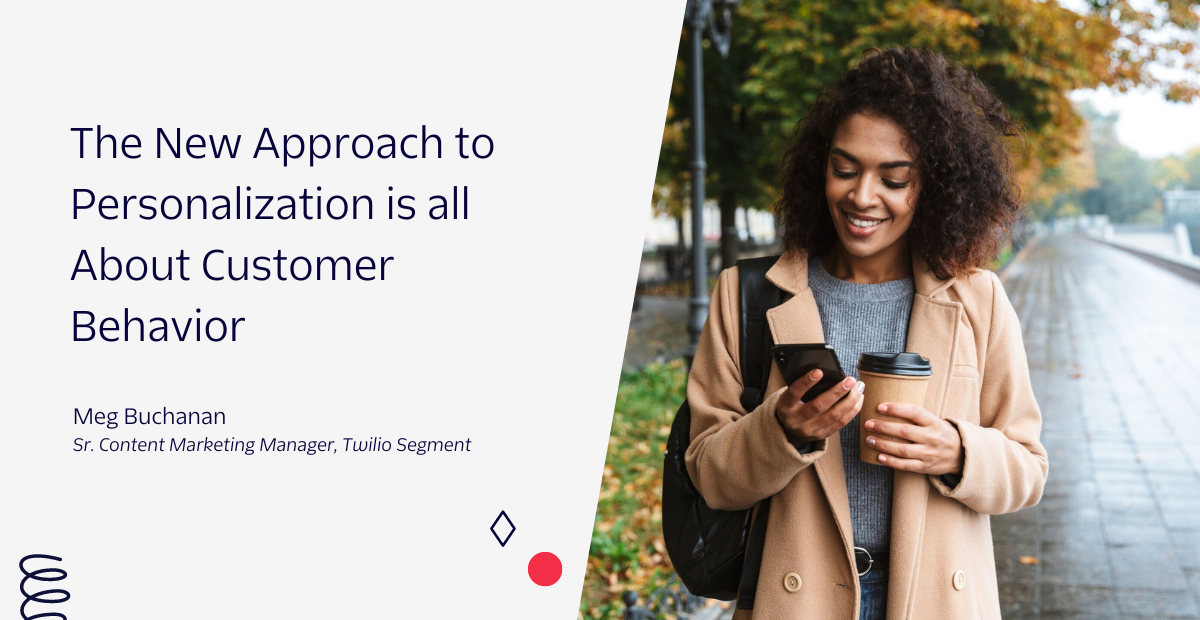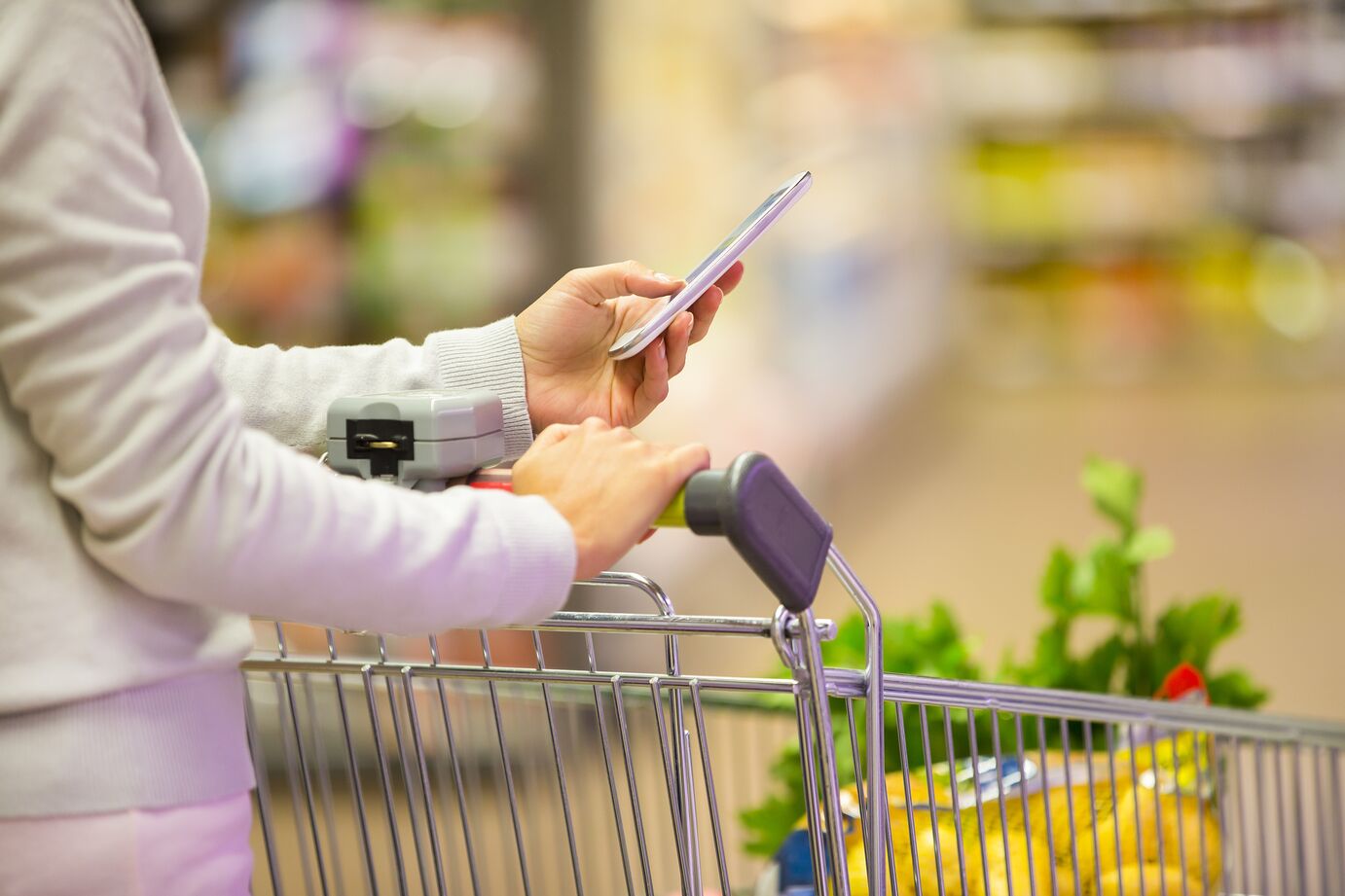The New Approach to Personalization is all About Customer Behavior
Time to read: 4 minutes

There are a lot of incredible ways that businesses are looping personalization into their customer experience these days. With the combination of secure first-party customer data and artificial intelligence, we’re seeing a shift from basic marketing email list sign-ups, to full-fledged virtual reality immersive shopping experiences, and everything in between.
This is because businesses are starting to focus more on customizing consumer experiences using behavior patterns rather than just personal information. For example, if a customer walks into your store, it’s less important to know their name or where they’re from and to instead focus on their needs/wants while they shop with you. Personalization today is about contextualizing customer behavior through smarter, more secure data.
In Twilio Segment’s 2022 State of Personalization report, we discuss the key trends behind why personalization matters for businesses moving forward. Beyond the clear benefits to ROI and maintaining customer loyalty, personalization gives brands a human edge over those still conducting business as usual. Below, we’ll showcase three distinct ways brands are looking at customer behavior to improve the way they deliver personalization.
Live from your living room
While we’re still very much in the age of ‘can you hear me now?’ video calling, investments in virtual events are only growing. In a 2021 Deloitte Global Marketing Trends Executive Survey, 75 percent of executives said they would invest in hybrid experiences in the next 12 months. And by our estimate, that shift will continue. We’ve already seen this occur in many businesses opting into hybrid work for their employees to allow for flexibility in when and where employees choose to work.
For consumers, businesses can make these hybrid experiences more personalized by considering audience behavior. Live video events are more engaging when the audience has the ability to chat with presenters and attendees live, participate in gamified experiences, or even shop the event as it goes on.
We’re seeing this trend across all industries, from the flexibility of parent-teacher conferences to gamified workout classes that inspire attendees to beat their best records and compete against other participants.
Barry’s Bootcamp is a great example of this. The fitness brand is harnessing customizable video-conferencing APIs to mirror the in-person experience while also allowing instructors to see participants and provide individualized feedback directly if the attendee chooses to share their screen. This kind of experience leads the way for fitness brands to reach members who don’t live near a physical location and still create customer loyalty virtually.
Shifting from brick and mortar
If there’s one personalization opportunity that businesses have been slower to adopt, it’s VR. And why wouldn’t they be? Before the pandemic, there wasn’t much justification for building these types of virtual experiences.
All of that changed in the past couple of years when suddenly an omnichannel experience became the default replacement for in-person interactions. And while augmented reality is nothing new, the way that companies are using its technology to create more personalized shopping is.
Retailers like Chanel have released their own versions of augmented reality virtual stores, where shoppers can interact with products as if they were in a physical store. By harnessing customer data effectively, they can offer every shopper individualized service and communications. Albertsons took a slightly different approach, offering a hybrid shopping experience. They recently deployed ‘self-checkout carts’ at some of their locations, which tally shopper’s items and allow them to avoid the checkout line entirely. The carts also allow shoppers to log in using their phone numbers so they can see order history from previous shopping trips.

But studies (and personal experience) also indicate that virtual reality, at this point, isn’t a one-to-one replacement for the personalized experience an in-person interaction provides. What businesses can do, however, is use aspects of virtual reality to enhance or replicate that in-person experience.
For example, Walmart recently released a tool that lets shoppers check out clothes on a model that matches their body type and skin tone before they check out. The virtual fitting room, which includes 50 models at this time, will double in the next few months. And Walmart isn’t the only store doubling down on the ‘virtual fitting room’ trend. Gap also acquired a virtual-try-on tech start-up last year with plans to help enhance their customers’ experience with 3D avatars. The idea behind both of these acquisitions is to follow the e-commerce trend while also building customized shopping experiences and thus, long-term loyalty to their brands.
The customer service experience we’ve all been waiting for
Raise your hand if you’ve ever had a painful customer service experience. Assuming all hands are raised, let’s address the elephant in the room, and acknowledge that historically customer service has been more of a headache than a breath of fresh air. We’ve all collectively spent hours on the phone waiting for help or had to repeatedly explain our situation to a new rep after forgetting about an open chat window in the middle of a conversation.
We have good news. With the push for personalization across the entire customer journey, customer service is now shifting to meet consumers where they are too.
More and more businesses are adopting new ways to personalize the customer service experience with everything from being able to video chat with a customer to troubleshoot a product installation to text about a package delay instead of having to sit on the phone. Further, imagine leaving a conversation with a rep and coming back to speak with a new person who already has all of your information so you don’t need to explain your problem all over again.
This kind of synchronization is possible and many companies are already trying to do it. But oftentimes, they are working piecemeal with several different platforms in order to pull off this level of service.
Vacasa is a great example of how to use personalization in customer service. Using Twilio Segment, the team can see the entire customer journey from welcome texts, to email opens and site reservation—all in one place. The full picture helps Vacasa form strong relationships, keep homeowners educated, and help bring its guests one step closer to ultimate vacation relaxation.
Personalization is about contextualizing customer behavior
The future of personalization depends on behavioral context that businesses can only get through first-party data. It will be about making an individual’s experience easy, interesting, and secure, so they want to keep coming back. By leaning into new technology to support these personalized experiences, businesses can differentiate and create long-term customer loyalty.
Meg Buchanan is a Colorado native, a Kansas Jayhawk, and a proud multi-tasking millennial. As Twilio Segment's Sr. Content Marketing Manager, she has more than seven years of experience writing for both agencies and in-house brands on topics from healthcare to hospitality.
Related Posts
Related Resources
Twilio Docs
From APIs to SDKs to sample apps
API reference documentation, SDKs, helper libraries, quickstarts, and tutorials for your language and platform.
Resource Center
The latest ebooks, industry reports, and webinars
Learn from customer engagement experts to improve your own communication.
Ahoy
Twilio's developer community hub
Best practices, code samples, and inspiration to build communications and digital engagement experiences.

